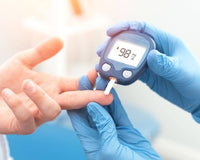Diclofenac works to reduce pain, swelling, and joint pain caused by arthritis, a condition that is characterized by swelling or tenderness in one or multiple joints. It is available as both a generic drug and as a brand name drug under multiple titles. In the following 3-minute article, we answer the questions: what is diclofenac and what is diclofenac sodium topical gel. We also discuss the interactions, side effects, warnings, dosage and mechanism of action of this popular medication. Read on to learn more.
What Is Diclofenac?
Diclofenac is a nonsteroidal anti-inflammatory drug that is used to treat mild to moderate pain caused by arthritis and other conditions including the following:
- Back pain
- Toothache
- Migraines
- Gout
What Is Diclofenac Sodium Topical Gel?
Diclofenac sodium topical gel is used to treat osteoarthritis in the knees. It is a topical form of the traditional diclofenac medication.
Diclofenac Side Effects
Like most medications, diclofenac does come with a list of associated side effects. Many of these side effects are relatively mild and should disappear within a few days.
Common Side Effects
The most common side effects of diclofenac include the following:
- Acidic or sour stomach
- Bleeding gums
- Chest pain
- Chills
- Cough
- Cloudy urine
- Constipation
- Dark urine
- Diarrhea
- Dizziness
- Heartburn
- Loss of appetite
- Pale skin
- Weight loss
If these side effects are mild, they may disappear within a few days. If they do not, contact a medical professional immediately.
Serious Side Effects
Some side effects of diclofenac are more serious. Contact your doctor or another medical professional immediately if you experience any of the following symptoms. call 911 if you think your symptoms are life-threatening.
The serious side effects of diclofenac include, but are not limited to, the following:
- Loss of appetite
- Loss of interest or pleasure
- Loss of consciousness
- Pale or blue lips and skin
- Red, irritated eyes
- Sensation of spinning
- Irritability
- Shaking in legs, arms, hands and feet
- Stiff neck or back
- Trouble concentrating
- Trouble sleeping
- Feeling of constant movement of surroundings
Disclaimer: At ManifestRX our goal is to provide you with the most relevant and current information. Unfortunately, because drugs affect each individual differently, we cannot guarantee that this information includes all possible side effects.
Warnings Of Diclofenac
There are a variety of warnings that come with diclofenac. When taking diclofenac it is essential to keep the following in mind:
NSAID Warning
People who take nonsteroidal anti-inflammatory drugs (NSAIDs) (other than aspirin) such as diclofenac may have a higher risk of having a heart attack or a stroke than people who do not take these medications.
Heart Attack Warning
Do not take diclofenac if you recently had a heart attack. If anyone in your family has a history of heart attacks, talk to your doctor before taking diclofenac.
Coronary Artery Bypass Graft Warning
If you will be undergoing coronary artery bypass graft surgery (a common form of heart surgery) in the next 3 months, do not take diclofenac.
Interactions of Diclofenac
Avoid drinking alcohol while taking diclofenac. It may increase the risk of stomach bleeding.
Ask a doctor or pharmacist before using other medicines for pain, fever, swelling, or cold/flu symptoms. They may contain ingredients similar to diclofenac (such as aspirin, ibuprofen, ketoprofen, or naproxen).
Avoid taking aspirin or other NSAIDs while taking diclofenac, unless your doctor tells you to.
How To Take Diclofenac
- Open the packet of diclofenac medicine right before you use it.
- Empty the contents of the packet into a cup with 1 to 2 ounces (30 to 60 milliliters [mL]) of water. Do not use any liquid other than water for mixing the medicine.
- Mix well and drink it immediately on an empty stomach.
Diclofenac Dosage
Take diclofenac as directed by your doctor or physician. Your dosage for diclofenac may vary depending on multiple factors, including the following:
- Your age
- Your weight
- The severity of your condition
Dosage For Acute Pain:
Adults and children 12 years of age and older: 25 milligrams (mg) 4 times a day.
Children younger than 12 years of age: Use and dose must be determined by your doctor.
Dosage For Osteoarthritis:
Adults: 35 milligrams (mg) 3 times a day.
Children: Use and dose must be determined by your doctor.
Dosage For Ankylosing Spondylitis:
Adults: 25 milligrams (mg) 4 times a day, with an extra 25 mg dose at bedtime if necessary.
Dosage For Pain Or Menstrual Cramps:
Adults: 50 milligrams (mg) 3 times a day.
Diclofenac Vs. Ibuprofen
Diclofenac is considered more potent than ibuprofen and needs to be taken two or three times per day. Ibuprofen often needs to be taken in higher doses to treat pain from arthritis.
Diclofenac Summary
Diclofenac treats pain from minor sprains, strains, or bruises. It works by decreasing inflammation. It belongs to a group of medications called NSAIDs.








